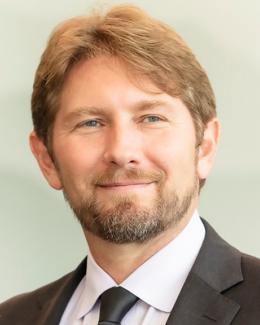One year into its existence, the Quantum Science Center has led the way to new scientific breakthroughs, generated 61 peer-reviewed publications, released eight invention disclosures and kicked off a poster session and a virtual summer school to help prepare the next generation of quantum scientists for the workforce.
Year Two promises to be even brighter, said David Dean, the QSC’s director and an Oak Ridge National Laboratory physicist.
“During the proposal process, the QSC developed exciting and challenging five-year goals,” he said. “We also mapped out a strategy to achieve these goals through a set of annual milestones. QSC researchers executed in an exemplary fashion, reaching each of our Year One research milestones, and we look forward to an exciting second year.”
The U.S. Department of Energy launched the QSC, one of five Quantum Information Science Research Centers funded by DOE’s Office of Science, in September 2020 to help realize the potential of topological quantum materials for manipulating, transferring and storing quantum information.
ORNL serves as headquarters of the five-year, $115 million effort, which spans four national laboratories, nine universities and three industry partners.
Quantum materials exhibit exotic properties under certain conditions, offering the potential to enable vastly more powerful computers, incredibly precise sensors and potentially unhackable communications.
The QSC’s research revolves around three focus areas:
- Quantum Materials Discovery and Design, which investigates and exploits the novel properties of topological materials for computing;
- Quantum Algorithms and Simulation, which includes the study of quantum systems and sensors; and
- Quantum Devices and Sensors for Discovery Science, which aims to enable unprecedented performance for real-world applications.
A key element of the QSC’s success has been its philosophy of engaging stakeholders from the outset to anticipate the technology needs of the public and private sectors, said Travis Humble, the Center’s deputy director.
“We are accelerating the transition of new quantum technologies by bringing together researchers from different disciplines to work on innovations in quantum computing and sensing,” he said.
ORNL has a 20-year history of leadership in quantum research. Scientific milestones since the QSC’s creation include:
- Generating accurate results from materials science simulations on a quantum computer that can be verified experimentally,
- Discovering new spin dynamics in a quantum materials system that may enable topological quantum computing and
- Advancing the capabilities of quantum sensors for quantum materials and dark matter discovery.
QSC members organized the Center’s first poster session in April, which offered graduate students and postdocs from various institutions the chance to network with experts and present research results. Volunteer judges selected three winners who earned the opportunity to discuss their work at a QSC all-hands meeting.
The Center also held its inaugural summer school, hosted by partner Purdue University, in May. More than 400 people — including undergraduate and graduate students, postdocs and early career scientists — registered for the event, which offered sessions on the Center’s three focus areas along with a science communication workshop, a quantum programming lab and a panel discussion focused on the future of quantum science and the next generation of researchers. Both events were conducted online due to the COVID-19 pandemic.
“We have seen tremendous interest from the next generation of scientists and engineers in getting started with quantum technologies,” Humble said. “They are one of the most vibrant parts of our QSC ecosystem.”
As the QSC begins its second year, Dean said he expects to see breakthroughs in all aspects of the Center.
“Through the QSC and other programmatic funding in quantum information science, DOE has given ORNL an opportunity to make impactful and world-changing discoveries in this field,” Dean said. “I believe QSC researchers will make tremendous progress in topological materials, quantum algorithms that describe them and quantum sensors that can manipulate them. We will see an increasing flow of discovery science through the innovation chain, and we will train the next generation of quantum information scientists and engineers who will go on to make great discoveries in the field.”
The QSC partners consist of the California Institute of Technology; ColdQuanta; Fermi National Accelerator Laboratory; Harvard University; IBM; Los Alamos National Laboratory; Microsoft; ORNL; Pacific Northwest National Laboratory; Princeton University; Purdue University; the University of California, Berkeley; the University of California, Santa Barbara; the University of Maryland; the University of Tennessee, Knoxville; and the University of Washington.
UT-Battelle manages Oak Ridge National Laboratory for DOE’s Office of Science, the single largest supporter of basic research in the physical sciences in the United States. DOE’s Office of Science is working to address some of the most pressing challenges of our time. For more information, visit https://energy.gov/science.—Matt Lakin


